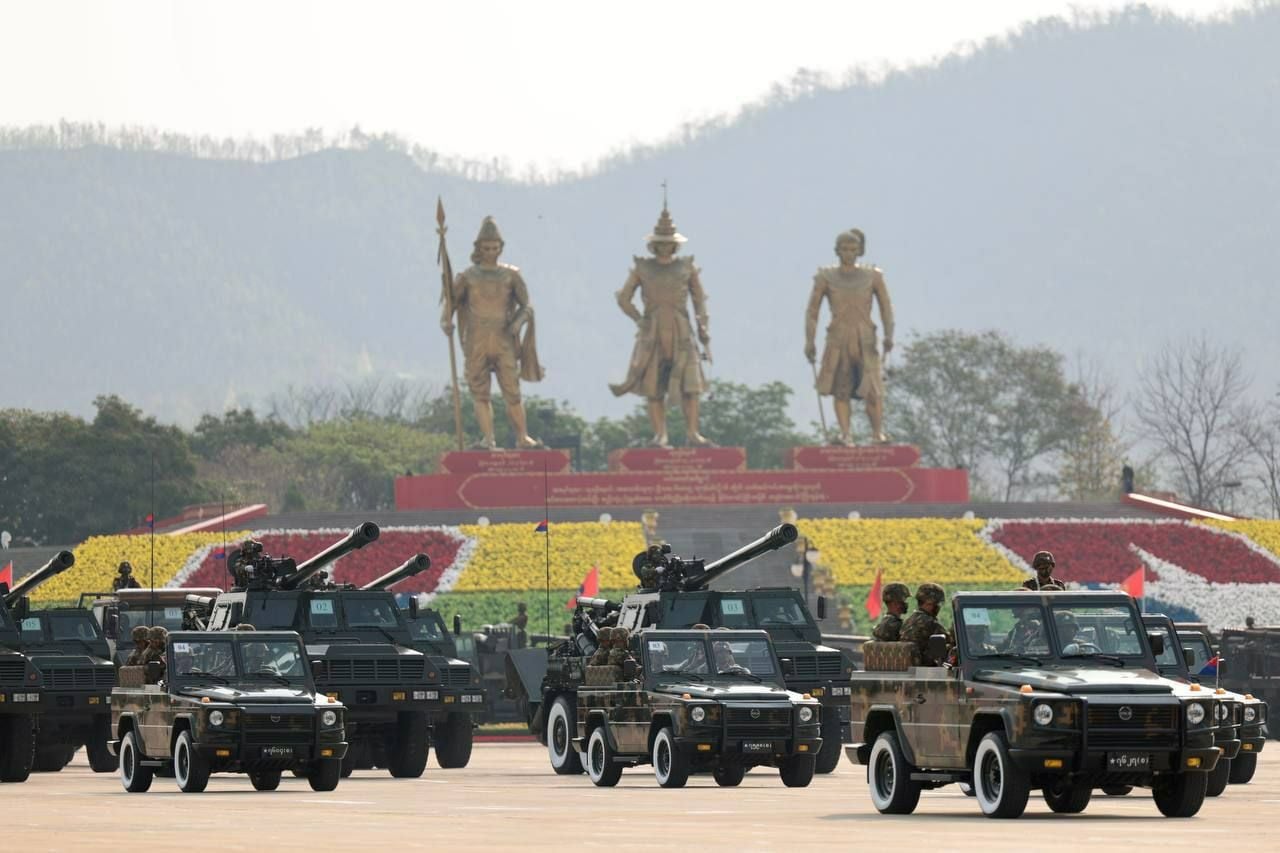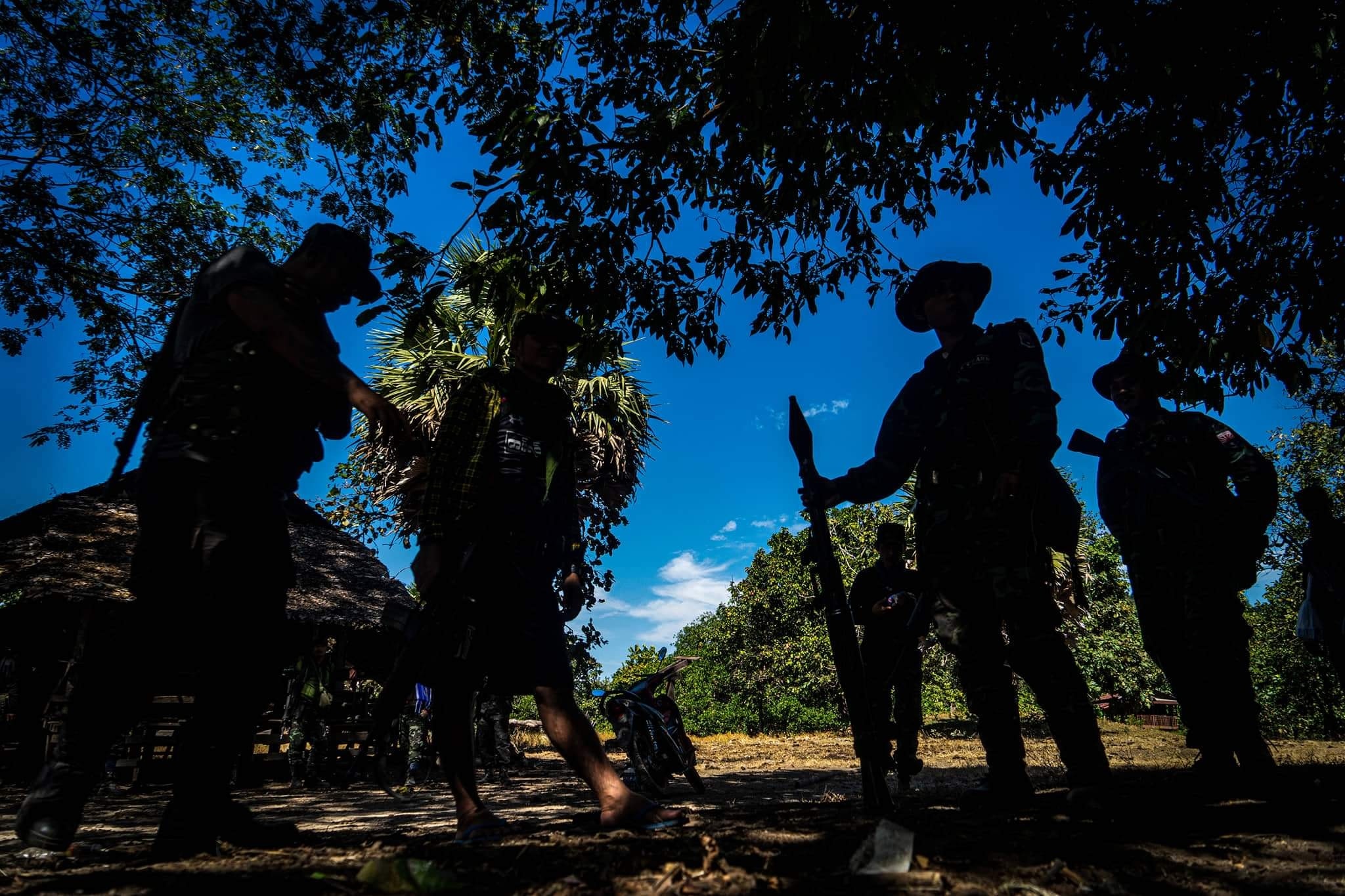Min Aung Hlaing’s Thingyan celebration reveals growing divisions within the army
Senior General Min Aung Hlaing’s plan to use the Thingyan Water Festival, traditionally the country’s largest and most important annual celebration, to create an impression of normalcy returning to Myanmar backfired spectacularly when photos of the coup leader celebrating the festival in strained fashion went viral on social media.
Ahead of Myanmar’s traditional New Year festival, Min Aung Hlaing instructed junta-controlled ministries and region and state governments to organize lively parties. As the regime boss, Min Aung Hlaing should have been celebrating Thingyan in public in the capital, Naypyitaw, or in Yangon or Mandalay. Instead, he spent three days of Thingyan, April 14-16, in Pyin Oo Lwin, a garrison town that is home to military academies and thousands of soldiers.
Some people have suggested that he was there to rally support of military personnel for his regime amid increased defections. However, the coup leader did not seem to be at ease while celebrating Thingyan at the military pavilion in Pyin Oo Lwin. Instead, he was accompanied by his personal bodyguards at all times in the pavilion, further confirming the growing divisions within the military.
Other key regime figures, including deputy junta boss Soe Win, also failed to appear in public during Thingyan. Apart from the junta-organized pavilions, streets across the country were deserted as most Myanmar people boycotted the festival. The military regime reportedly hired people and forced civil servants to take part in the festival to create an impression that its Thingyan pavilions were crowded with revelers.
On New Year’s Day itself, junta-controlled newspapers reported that the “Thingyan Festival ended successfully, reflecting the solidarity between the government, Tatmadaw [Myanmar military] and the people.”

Coup leader wastes billions on hollow titles
Over 1.5 billion kyats of public money was wasted by Senior General Min Aung Hlaing when he conferred honorary titles on individuals including himself on April 17, Myanmar’s New Year’s Day.
Some 146 individuals received honorary titles, with the list of recipients dominated by regime figures. The junta chief displayed a serious lack of modesty by awarding himself two of the highest honorary titles: Sadoe Thiri Thudhamma – the Most Glorious Order of Truth – and Sadoe Maha Thray Sithu – the Order of the Union of Myanmar.
The titles come with gold braided salwe, a belt worn over the right shoulder and across the chest. The salwe for the highest title, Agga Maha Thiri Thudhamma, is made of 45 ticals of gold, and the salwe for the lowest-ranking title is made of five ticals of gold.
Among the recipients, some posthumous, were Myanmar’s previous dictators: Ne Win, Saw Maung and Than Shwe. While Min Aung Hlaing awarded himself 40 ticals of gold, he gave his mentor Than Shwe just eight ticals.
Min Aung Hlaing has been preaching the virtues of thrift, with Myanmar mired in economic chaos due to post-coup political turmoil. But he has also been spending billions on unnecessary things such as February’s grand military parade to mark Union Day. He also ordered huge sums to be spent on the Thingyan Festival that most people in the country boycotted.

Regime in defensive mode
Myanmar’s military regime has issued an unusual “emergency alert” to all its units across the country to limit troop mobilizations and which puts them on standby for possible attacks, especially by resistance forces.
The order follows the shadow National Unity Government’s (NUG) statement that it was preparing more offensives against regime troops.
At the same time, junta forces are sustaining heavy casualties, especially in Sagaing Region, Karen and Kayah states, due to intensifying attacks from resistance groups fighting alongside ethnic armed organizations such as the Kachin Independence Army and Karen National Liberation Army.
Myanmar military defectors said the alert was unusual because it isn’t time-specific, and similar alerts are normally issued a week before Armed Forces Day in March and commanders’ quarterly meetings.
Defectors said that the alert was putting the military into defensive mode, as it seems that the regime is reacting to the NUG’s plan and is buying time to prepare.

Karen State: the deadliest place for junta soldiers
The total number of junta soldiers killed in Karen State since the start of the year now stands at 1,215.
The Karen National Union (KNU), whose soldiers are fighting alongside resistance forces against the military regime, said this week that over 160 junta troops were killed in the first two weeks of April in over 200 clashes with ethnic Karen fighters in Karen State, southeast Myanmar.
March was the deadliest month for junta forces in Karen State so far this year, with 429 deaths reported in a total of 510 clashes. Numbers released by the KNU show there were 435 clashes in January with 313 regime deaths and 421 clashes in February with 311 regime deaths.
Fighting between regime forces and the KNU has intensified since junta troops raided the town of Lay Kay Kaw in Karen State’s Myawaddy Township on December 14.
You may also like these stories:
About 20 IDPs Test Positive for COVID-19 in Camp in Myanmar’s Karen State
Myanmar Rohingya Genocide Case Is Legitimate, Gambia Tells UN’s Top Court
Cobra Gold Military Exercise Kicks Off in Thailand Without Myanmar

















